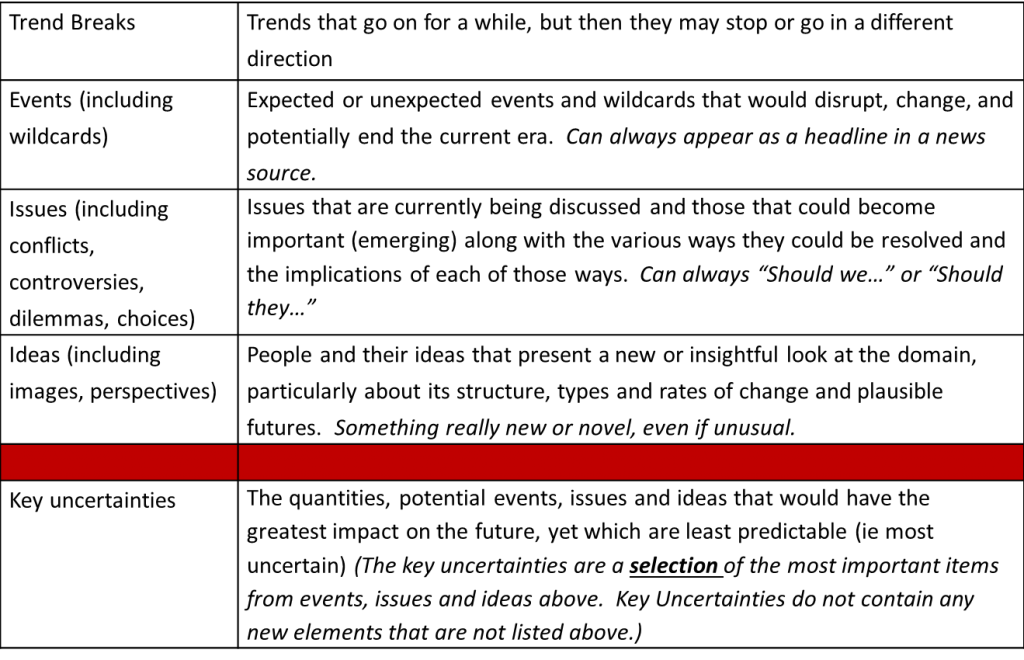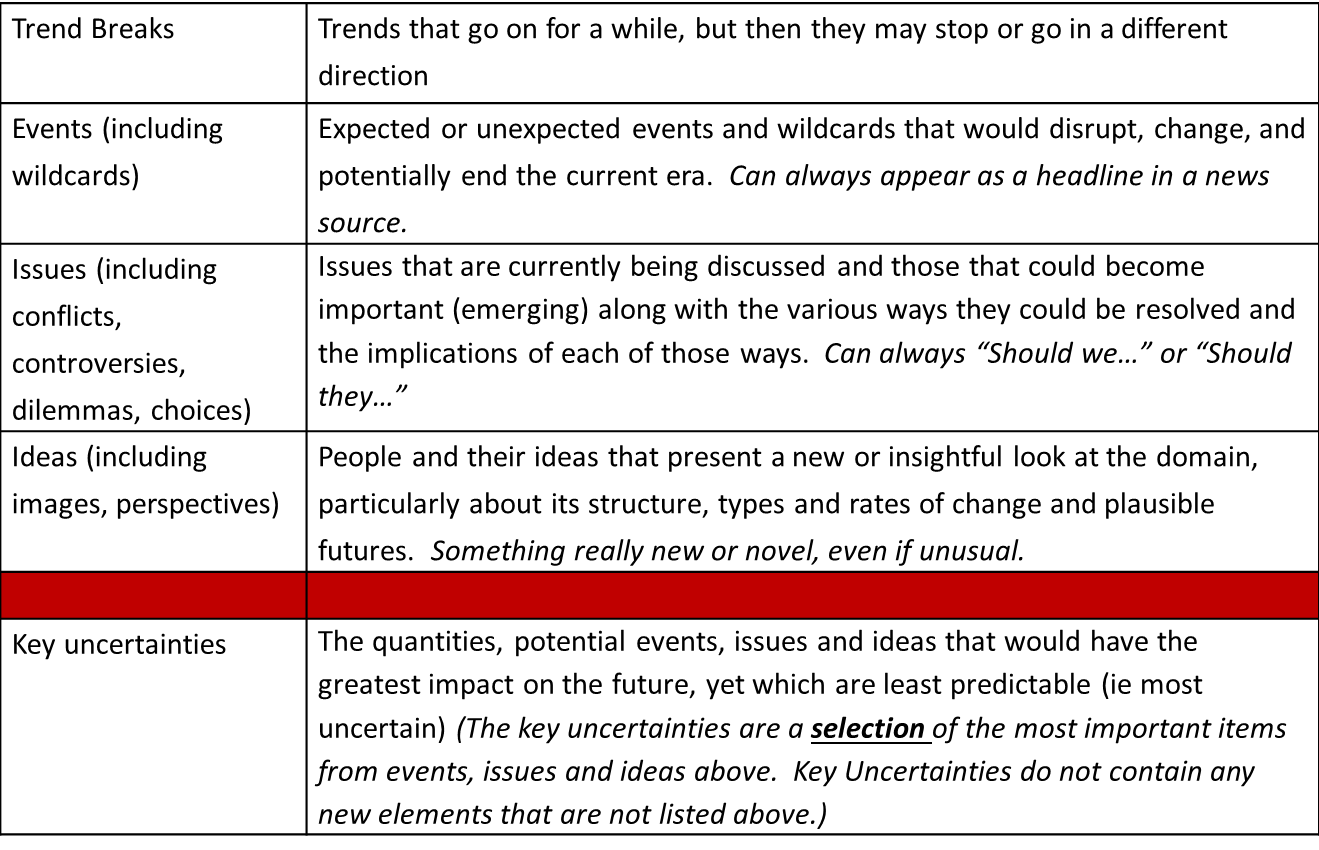With the history on hand, let’s now dig into some fairly significant process tweaks we’re implementing in Framework Foresight (FF) this fall in Futures Research class. The key change is in how we do forecasting/futuring. The essence of the step is to produce a baseline and alternative futures. [Keep in mind that the framing and scanning steps have preceded this step and the templates act to guide and capture this research.] The baseline is the extrapolated future with no major surprises – trends stay on track, mainstream plans are fulfilled, and conventional projections are accurate. My experience is that the baseline inputs generally work well and that most individuals and organizations are pretty comfortable with producing the baseline.
 Producing the alternatives, however, has been problematic. The alternative futures are generated using a different set of inputs to generate ideas on how the futures might be different than the baseline. There is typically some consternation about what the categories mean, and what exactly we are after. A challenge is that the alternative space is so wide open – there is not a lot of structure, which is often important to students and those new to foresight. Some will go focused and “thematic” and try to be consistent and have all the inputs fit together. Others will go broad and gather a wide range of inputs and often struggle to develop a theme.
Producing the alternatives, however, has been problematic. The alternative futures are generated using a different set of inputs to generate ideas on how the futures might be different than the baseline. There is typically some consternation about what the categories mean, and what exactly we are after. A challenge is that the alternative space is so wide open – there is not a lot of structure, which is often important to students and those new to foresight. Some will go focused and “thematic” and try to be consistent and have all the inputs fit together. Others will go broad and gather a wide range of inputs and often struggle to develop a theme.
We note that template and the categories are intended to stimulate ideas about alternative futures. We recommend revisiting scanning hits before tackling the alternative futures inputs to refresh thinking on interesting ideas. The Horizon 2 and 3 scanning hits provide stimulus for alternatives (Horizon 1 hits are for the baseline). These inputs in turn provide stimulus for developing the alternative futures.
In teaching FF, whether in the Master’s program or even the week-long boot camp, we have students develop one alternative future. That is generally do-able with some struggle. However, we have not typically used this approach to develop a full set of scenarios. Here, we typically employ one of the various scenario techniques. One that we’ve found useful, particularly given that we are often working with those new to foresight, is the scenario archetype technique. I previously wrote about some tweaks we’ve made to Dator’s original approach. So, to wrap up part two, we’re adopting the archetype approach as our standard approach within FF. More next time! — Andy Hines

Leave a Reply